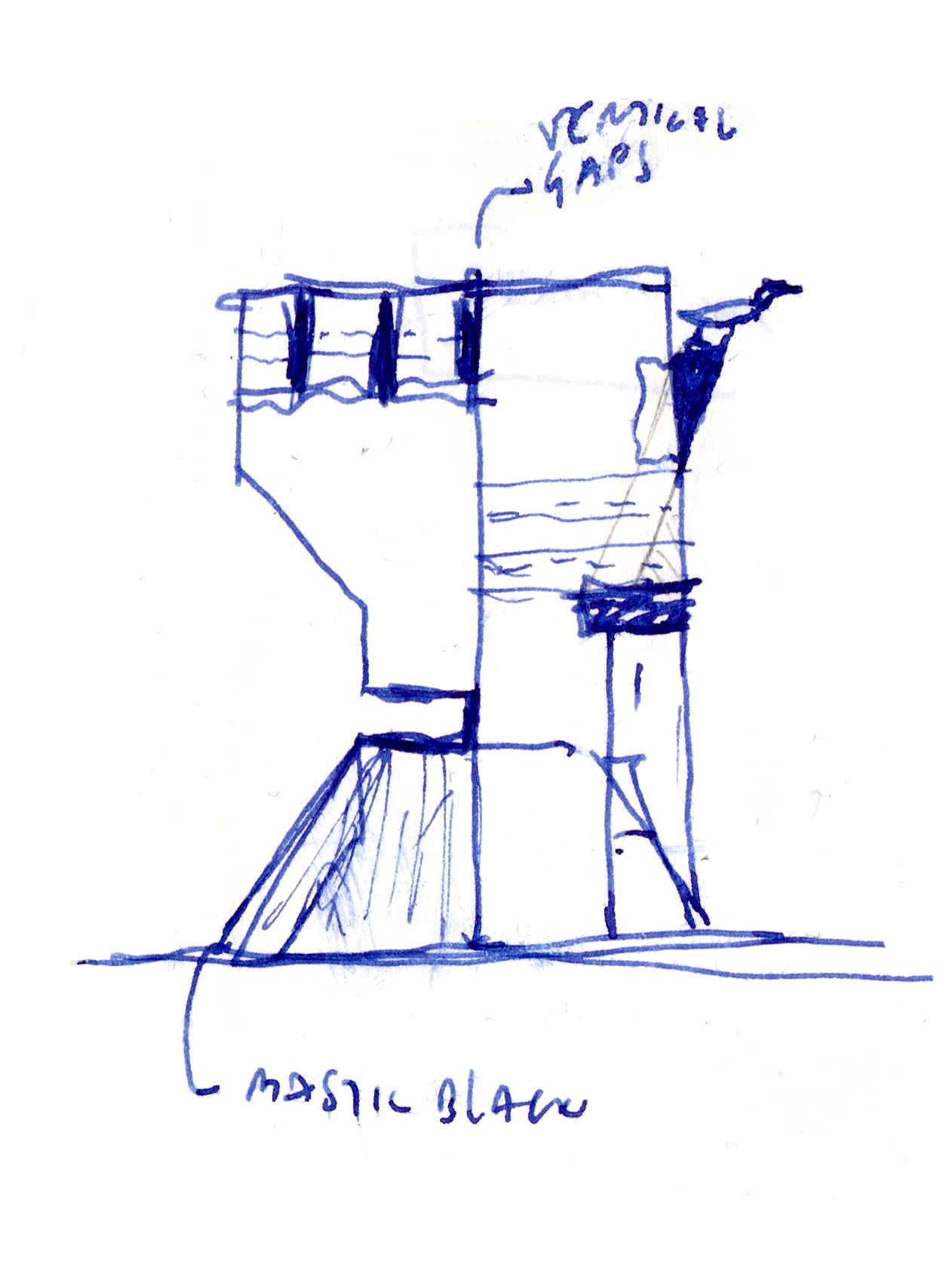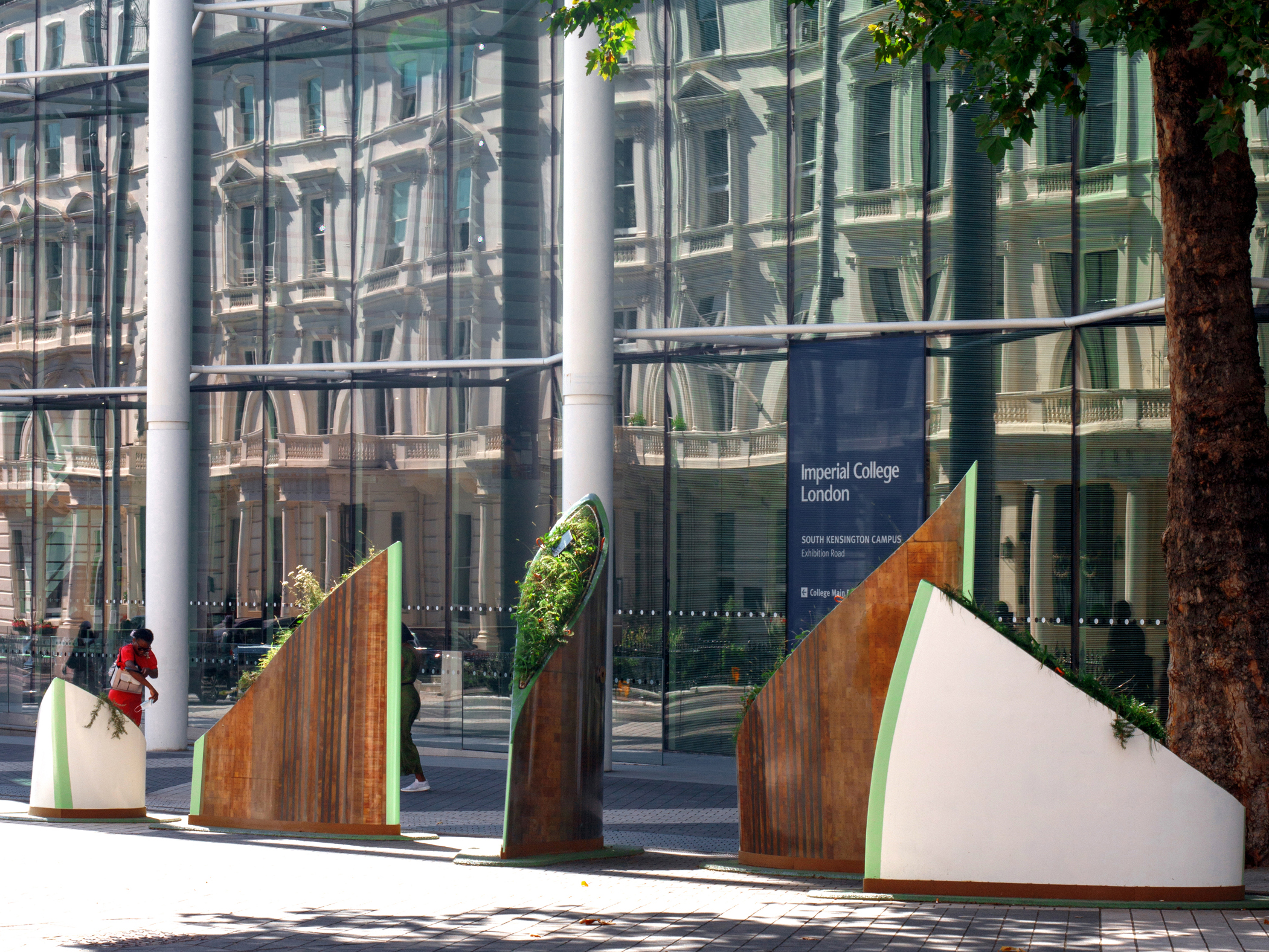URBAN RADICALS designs objects, rooms, architectures and landscapes. We are a network of friends, colleagues and expert collaborators, working together to solve design problems across contexts and scales. We grow through projects, parties, dinners, fishing trips, gardening, stories, painting, cooking, workshops, walks, gatherings and conversations.

A BRICK FOR VENICE re-interprets the iconic forms of the beautiful Venetian chimneys, while exploring the potential of using dredged waste sediment from the Venetian canals and other waste by-products from the surrounding industrial areas, to create a low-carbon brick from and for Venice. This is of particular importance in a time of climate emergency and provides a vision for forming closed-loop systems in our built environment.

A BRICK FOR VENICE re-interprets the iconic forms of the beautiful Venetian chimneys, while exploring the potential of using dredged waste sediment from the Venetian canals and other waste by-products from the surrounding industrial areas, to create a low-carbon brick from and for Venice. This is of particular importance in a time of climate emergency and provides a vision for forming closed-loop systems in our built environment.

A tableau of seating modules designed for the public space next to Christopher Wren’s St Mary le Bow Church, in the City of London. Common Ground responds to the site’s history of reclamation and layered reconstruction, utilising materials salvaged from sites of manufacture around the UK. This coincides with Wren’s 300 year anniversary, a legacy which the project aims to bring to attention for its ethos of radical re-use.

A tableau of seating modules designed for the public space next to Christopher Wren’s St Mary le Bow Church, in the City of London. Common Ground responds to the site’s history of reclamation and layered reconstruction, utilising materials salvaged from sites of manufacture around the UK. This coincides with Wren’s 300 year anniversary, a legacy which the project aims to bring to attention for its ethos of radical re-use.

In 2021, we were selected by the Cyprus Architects Association and Ministry of Culture, to curate and design the National Pavilion for Cyprus, at the 17th International Architecture Exhibition – La Biennale di Venezia. Taking the pavilion’s original domestic typology as a point of departure, the exhibition scales up one of the most archetypical structures and social objects, the table, into a quasi-monumental form, establishing a space for gathering, encrusted with narratives of craft, collectivity, community and play.

In 2021, we were selected by the Cyprus Architects Association and Ministry of Culture, to curate and design the National Pavilion for Cyprus, at the 17th International Architecture Exhibition – La Biennale di Venezia. Taking the pavilion’s original domestic typology as a point of departure, the exhibition scales up one of the most archetypical structures and social objects, the table, into a quasi-monumental form, establishing a space for gathering, encrusted with narratives of craft, collectivity, community and play.

Salina Archipelago is a 4000m2 public park we designed for the Municipality of Larnaca in Cyprus. The project is conceived around the notion of islands, which create an archipelago of activities made from a series of land management movements, which are in turn shaped around the site’s existing vegetation and palm trees, to create a 3-dimensional tapestry of experiences for the public.

Salina Archipelago is a 4000m2 public park we designed for the Municipality of Larnaca in Cyprus. The project is conceived around the notion of islands, which create an archipelago of activities made from a series of land management movements, which are in turn shaped around the site’s existing vegetation and palm trees, to create a 3-dimensional tapestry of experiences for the public.

We have been designing a series of furniture for public space. This is our BIG BUOY, a playful and interactive bench made of leftover cork from an exhibition at Tate Modern. Inspired by the signalling buoys gently rocking on the Thames, BIG BUOY has been engineered to always correct itself to an upright position without flipping over, eliminating the need for ground anchoring.

We have been designing a series of furniture for public space. This is our BIG BUOY, a playful and interactive bench made of leftover cork from an exhibition at Tate Modern. Inspired by the signalling buoys gently rocking on the Thames, BIG BUOY has been engineered to always correct itself to an upright position without flipping over, eliminating the need for ground anchoring.

ROCK PAPER SCISSORS is a paper installation designed for POLIFORM. Pebbles collected along the coast were 3D scanned, post-processed, unfolded into 2D surfaces, printed and cut. These were reconstructed into a seemingly megalithic self-supporting structural system, an assemblage resonating the ancient trilithon, contrasting and complementing the showroom.

ROCK PAPER SCISSORS is a paper installation designed for POLIFORM. Pebbles collected along the coast were 3D scanned, post-processed, unfolded into 2D surfaces, printed and cut. These were reconstructed into a seemingly megalithic self-supporting structural system, an assemblage resonating the ancient trilithon, contrasting and complementing the showroom.

Windflower is a 50m long decommissioned wind turbine blade, upcycled into a family of urban furniture and street planters for the Discover South Kensington festival and the Goethe-Institut on Exhibition Road, London. The project proposes alternative uses and raises awareness about the lifespan of these large pieces of our infrastructure, which end up buried in landfills as their composite materials are not easily recycled.

Windflower is a 50m long decommissioned wind turbine blade, upcycled into a family of urban furniture and street planters for the Discover South Kensington festival and the Goethe-Institut on Exhibition Road, London. The project proposes alternative uses and raises awareness about the lifespan of these large pieces of our infrastructure, which end up buried in landfills as their composite materials are not easily recycled.